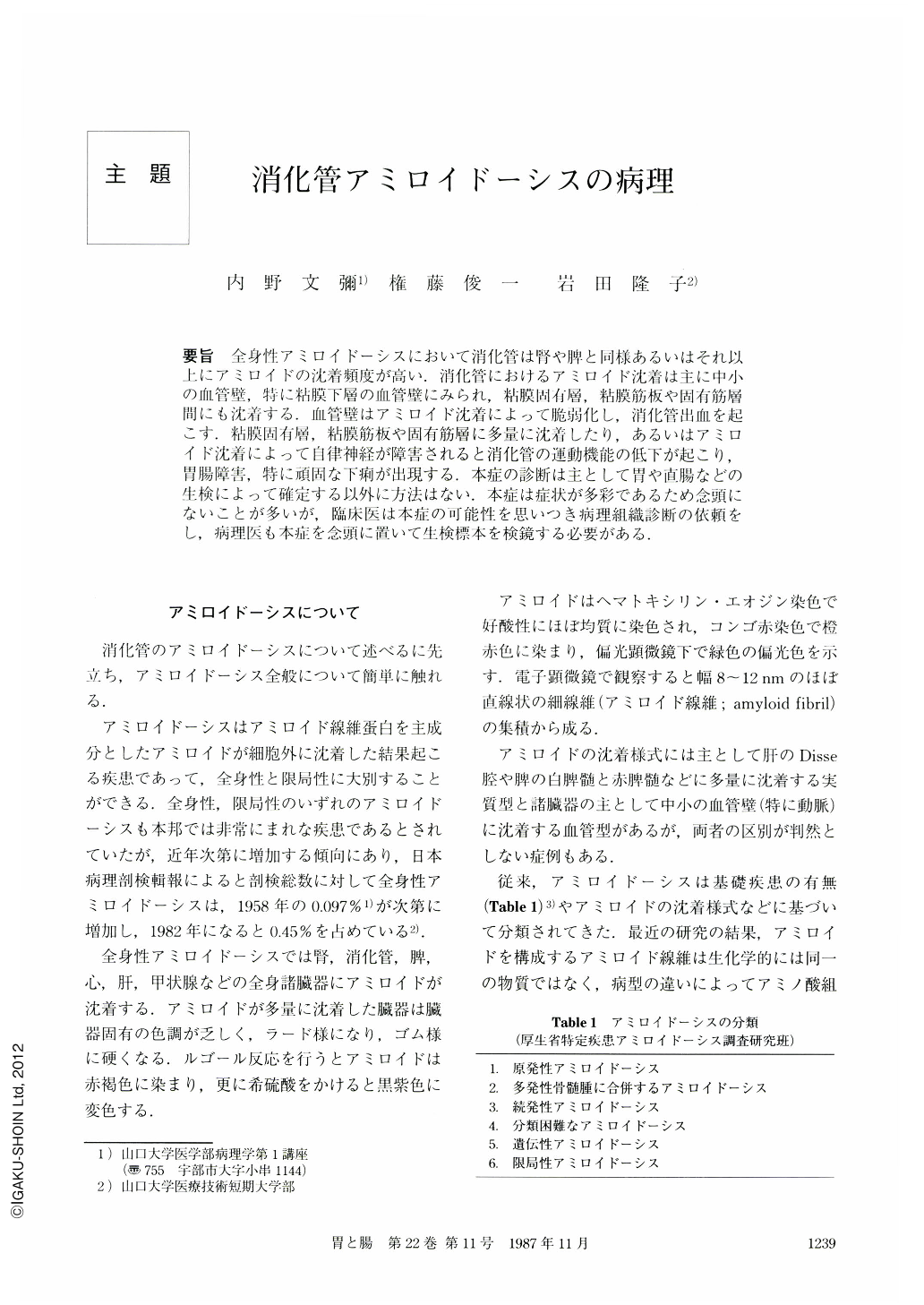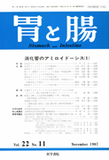Japanese
English
- 有料閲覧
- Abstract 文献概要
- 1ページ目 Look Inside
- サイト内被引用 Cited by
要旨 全身性アミロイドーシスにおいて消化管は腎や脾と同様あるいはそれ以上にアミロイドの沈着頻度が高い.消化管におけるアミロイド沈着は主に中小の血管壁,特に粘膜下層の血管壁にみられ,粘膜固有層,粘膜筋板や固有筋層間にも沈着する.血管壁はアミロイド沈着によって脆弱化し,消化管出血を起こす.粘膜固有層,粘膜筋板や固有筋層に多量に沈着したり,あるいはアミロイド沈着によって自律神経が障害されると消化管の運動機能の低下が起こり,胃腸障害,特に頑固な下痢が出現する.本症の診断は主として胃や直腸などの生検によって確定する以外に方法はない.本症は症状が多彩であるため念頭にないことが多いが,臨床医は本症の可能性を思いつき病理組織診断の依頼をし,病理医も本症を念頭に置いて生検標本を検鏡する必要がある.
Involvement of the gastrointestinal tract in amyloidosis is well recognized and can be demonstrated in almost all patients with systemic amyloidosis. Histologically, amyloid deposits are mainly located at the vascular walls of any layers, most apparent in the submucosa (Figs. 2, 3).
Vascular fragility caused by amyloid deposit in the vascular walls may cause gastrointestinal bleeding. Impaired motor activity, resulting from both marked amyloid deposits in the intestinal walls and degeneration of the intrinsic autonomic nerve may be responsible for severe diarrhea.
Diagnosis of amyloidosis can be done by the histological examination of biopsy gastric and rectal specimens. To make a correct diagnosis, careful pathological examination is the most effective means to confirm the existence of suspected amyloidosis.

Copyright © 1987, Igaku-Shoin Ltd. All rights reserved.


